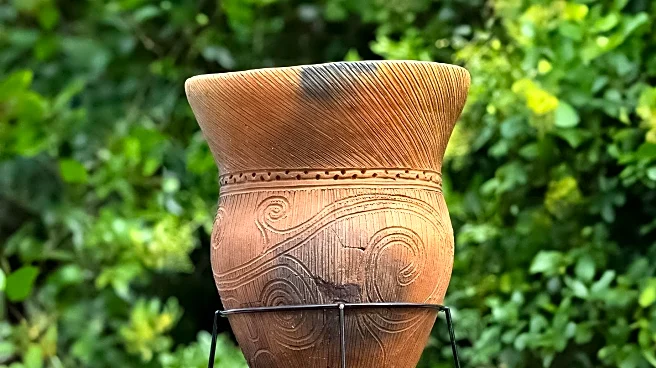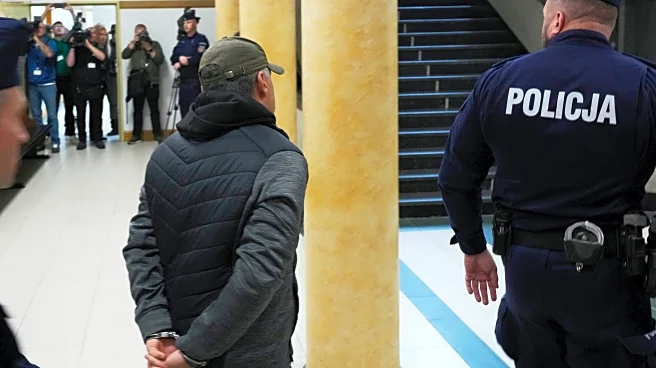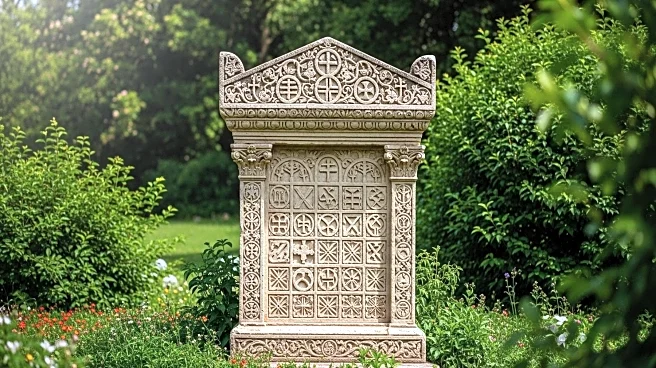What's Happening?
Daniella Santoro and her husband discovered a Roman-era gravestone in their New Orleans backyard while clearing underbrush. Initially mistaken for a large rock, the stone was identified as the grave marker
of Sextus Congenius Verus, a Roman soldier who died 1,900 years ago. The gravestone had been missing from an Italian museum since World War II, when the museum was bombed. Santoro, an anthropologist at Tulane University, consulted with local archaeologist D. Ryan Gray and classics professor Susann Lusnia to confirm the stone's origins. Lusnia's research revealed that the gravestone was part of a collection of military grave markers unearthed in the 1860s in Civitavecchia, Italy. The stone's disappearance was attributed to the chaos following WWII, and it was later found in the backyard of Santoro's home, having been placed there by a previous owner.
Why It's Important?
The discovery of the Roman gravestone in New Orleans highlights the complex history of artifacts displaced during wartime. It underscores the importance of preserving cultural heritage and the challenges faced in recovering lost historical items. The return of the gravestone to Italy is significant for the National Archaeological Museum of Civitavecchia, as it restores a piece of their collection that was thought lost. This event also illustrates the interconnectedness of global history and the unexpected ways in which artifacts can travel across continents. The involvement of the FBI's Art Crime division in repatriating the stone emphasizes the legal and ethical dimensions of artifact recovery.
What's Next?
The gravestone is currently held by the FBI's New Orleans field office, awaiting repatriation to Italy. The process involves coordination between U.S. and Italian authorities to ensure the artifact's safe return. Museum officials in Civitavecchia are eager to reintegrate the gravestone into their collection, which will enhance their historical exhibits. The discovery may prompt further investigations into other missing artifacts from the museum, potentially leading to more recoveries. Additionally, this case could inspire increased vigilance and reporting of similar finds by the public, aiding in the preservation of cultural heritage.
Beyond the Headlines
The discovery raises questions about the ethical responsibilities of individuals who unknowingly possess historical artifacts. It also highlights the role of museums and archaeologists in educating the public about the significance of cultural heritage. The story of the gravestone's journey from Italy to the U.S. reflects broader themes of migration and the impact of war on cultural property. It serves as a reminder of the importance of historical memory and the ways in which artifacts can bridge past and present.













